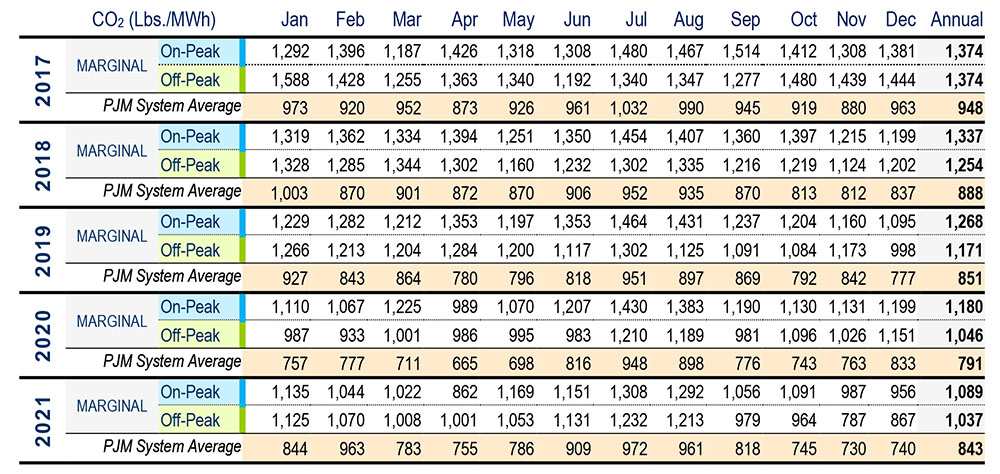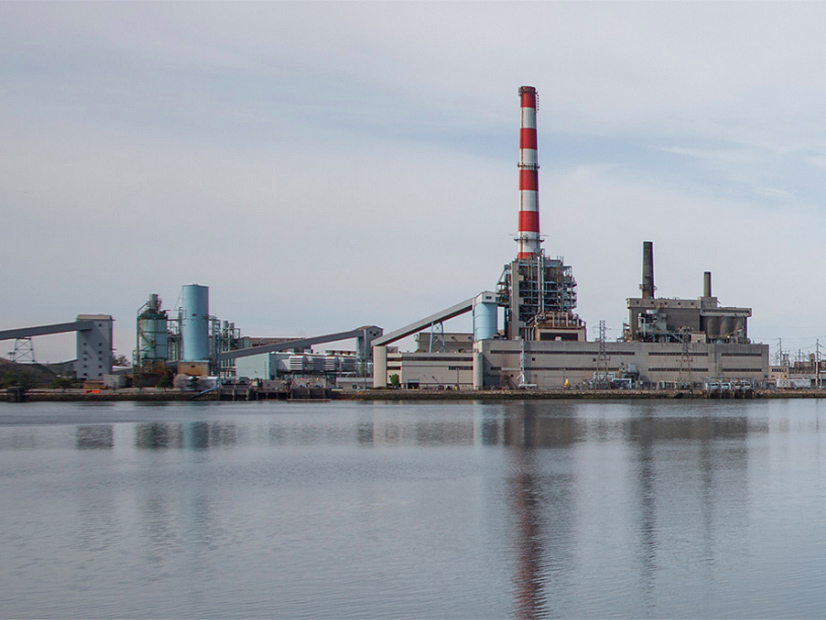Carbon dioxide, nitrogen oxide and sulfur dioxide emission levels in PJM increased last year after the historic lows of 2020 during the height of the COVID-19 pandemic, according to a report released Tuesday by the RTO.
But emission rates did drop, in some cases sharply, compared to 2019 levels, continuing an overall decline since 2005, according to PJM’s annual Emission Rates Report, used by generators, state regulators and other stakeholders in planning for environmental objectives.
 Marginal carbon dioxide emission rates in PJM from 2017-present | PJM
Marginal carbon dioxide emission rates in PJM from 2017-present | PJM
The average CO2 emission rate for electric generators in PJM increased 6.6% from 2020 to 2021, going from 791 pounds/MWh to 843 pounds/MWh. That, however, was 1% lower than in 2019. The RTO attributed the increased levels last year to relaxed COVID-19 precautions and business and consumer activity returning to near pre-pandemic levels, with 2020 seeing historically low CO2 emission levels.
Since 2005, CO2 emission rates have fallen 35% across the RTO’s footprint. Emission rates for NOx and SO2 have decreased 85% and 94%, respectively, during the same period.
NOx emission rates increased 5.6% in 2021, but they were down 15.6% compared to 2019. SO2 rates increased 11.6% in 2021, but they were down 12.7% compared to 2019.
On average, combined cycle gas-fired generators accounted for 59.75% of the marginal unit — the resource that sets the LMP — time on the system In 2021. Combined cycle generators made up 64.33% of the marginal unit time in 2020.
Coal units were the second largest marginal unit in 2021, coming in at 14.15%, down from 17.53% in 2020. Wind units made up 11.04%, up from 6.75% in 2020.



